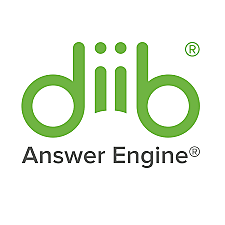4.25
K2View Review
Discover our K2View review. Assess features, security, pricing, support, and updates. Learn about its value for money and see if it meets your data needs!
Comprehensive overview and target audience
K2View offers a unique approach to data management, operating primarily through its patented Micro Database technology. This allows organizations to access, manage, and deliver data for specific business entities like customers or products in real time. It fundamentally changes how complex enterprises interact with their distributed data landscapes, aiming for simplification and speed!
The platform is predominantly designed for large enterprises grappling with significant data complexity. This often includes organizations in sectors like telecommunications, financial services, healthcare, and retail: industries where a unified, real time view of the customer or business entity is critical for operations, compliance, and customer experience. Companies undergoing digital transformation or dealing with legacy system integration challenges will find K2View particularly relevant. Its ability to handle vast data volumes across disparate sources makes it suitable for data intensive environments.
K2View essentially creates a digital entity for each business object, unifying all associated data regardless of where it resides. This addresses common frustrations with slow data access, fragmented views, and the high costs of traditional integration methods. Evaluating the K2View value for money often involves considering the operational efficiencies gained, reduced integration times, and improved data compliance posture it enables. It tackles problems that are notoriously difficult and expensive to solve otherwise.
Robust K2View security features are integral to the platform, ensuring data is protected both at rest and in transit; this is crucial given the sensitive nature of enterprise data it manages. The platform employs granular access controls and encryption. Furthermore, K2View demonstrates commitment to innovation through regular K2View updates and new features, enhancing its core capabilities and adapting to evolving market needs. This ensures the platform remains a relevant and powerful tool for its users over the long term.
When conducting a K2View pricing comparison, it is important to look beyond simple license costs. Consider the total cost of ownership and the potential return on investment compared to alternative data integration and management solutions or building custom systems. While specific pricing varies, its enterprise focus suggests a value proposition aimed at significant operational impact. To help users maximize their investment, extensive K2View support and training resources are available, including documentation, online courses, and dedicated support channels, facilitating user adoption and troubleshooting.
User experience and functional capabilities
Delving into K2View reveals a platform engineered for complex enterprise environments, influencing both its usability and its deep functional capabilities. Gaining K2View user experience insights often highlights a steeper initial learning curve compared to simpler tools, reflecting its powerful nature. However, for technical teams managing data integration and transformation, the logical structure built around Micro Databases provides clarity once grasped. The interface facilitates the design, deployment, and management of these Micro Databases, offering visual tools for mapping data flows and defining business entities. Understanding how to use K2View effectively involves embracing its entity centric approach, which differs significantly from traditional ETL or database management paradigms.
Functionally, K2View excels at creating a unified, real time view of disparate data sources. Its core capability lies in constructing and managing Micro Databases for each instance of a business entity, like a specific customer or product. This allows for: rapid data access and delivery for operational systems; improved data governance through centralized entity management; and the enablement of complex data orchestration tasks. Integrating K2View with other tools is a fundamental aspect of its design. It provides robust APIs and connectors, allowing it to serve data to various consuming applications, analytical platforms, and operational systems, acting as a central data hub or fabric within an enterprise architecture.
Embarking on implementation often requires careful planning. While a K2View implementation guide and support resources exist, the process typically involves close collaboration between K2View experts and the enterprise’s IT teams. Defining the business entities correctly and mapping the source systems are critical early steps. Common problems with K2View implementation can arise from underestimating the complexity of existing data landscapes or insufficient upfront analysis of entity definitions. Success hinges on a clear strategy and adherence to best practices for K2View deployment, such as iterative development and strong governance.
The platform’s evolution is marked by consistent K2View updates and new features, enhancing performance, security, and connectivity. These updates ensure K2View remains capable of handling emerging data challenges and integration requirements. Best practices for K2View usage emphasize leveraging the Micro Database concept fully, focusing on data quality within the entity view, and utilizing the platform’s governance features to maintain control and compliance. Mastering these aspects unlocks the platform’s potential for significant operational efficiency and agility in data management.
Who should be using K2View
K2View is specifically engineered for large scale organizations navigating significant data complexity. If your enterprise struggles with fragmented data spread across numerous disparate systems, both modern and legacy, K2View warrants serious consideration. This platform finds its strongest footing in sectors where a unified, real time understanding of core business entities is not just advantageous but essential for operations, compliance, and competitive differentiation. Think telecommunications providers needing a single customer view, financial institutions managing risk and customer interactions, healthcare organizations requiring holistic patient data, or large retailers aiming for seamless omnichannel experiences.
Companies undergoing major digital transformation initiatives or modernizing their application landscape will find K2View particularly beneficial. It excels where traditional integration methods prove too slow, costly, or incapable of delivering the necessary agility. A typical K2View use case scenario involves creating a trusted, real time data product for a specific entity like “Customer 360”, “Product Master”, or “Network Device”. This unified view then serves various consuming applications, operational processes, and analytical needs, dramatically simplifying data access and improving consistency.
Furthermore, organizations prioritizing data governance, security, and compliance should evaluate K2View. Its entity centric model inherently supports better data quality management and provides robust security controls. While the initial learning curve requires commitment, the teams who benefit most include: data engineering and integration specialists; enterprise architects designing data fabrics or hubs; application developers needing reliable, real time entity data via APIs; and data governance professionals seeking to enforce standards centrally. Adopting K2View effectively means embracing its entity focused approach and implementing Best practices for K2View related to data modeling, governance, and iterative deployment. Ultimately, K2View is for enterprises ready to fundamentally rethink data integration and management to achieve significant operational improvements and accelerate innovation.
Unique Features offered by K2View
K2View distinguishes itself primarily through its patented Micro Database technology. This isn’t just another data integration tool; it fundamentally reorganizes data around specific business entities like customers, products, or locations. Each entity gets its own secure, micro database, unifying all relevant information from across disparate source systems in real time. This entity centric approach is a unique feature that simplifies complex data landscapes, providing a holistic view that traditional methods often struggle to achieve efficiently.
The platform offers significant customization options. Defining the structure of each Micro Database, mapping data elements from various sources, and configuring data transformation and governance rules are core aspects of implementation. This deep level of configuration allows organizations to tailor the platform precisely to their operational needs and data models. Effectively Customizing K2View for business growth involves aligning these configurations with strategic goals, ensuring the platform delivers trusted data products that directly support specific initiatives, improve decision making, and enable scalability.
Further key features include:
- Real time data access and delivery: Micro Databases provide immediate access to unified entity data.
- Data transformation and enrichment: Capabilities to cleanse, transform, and enrich data within the entity context.
- Advanced data governance and security: Granular controls applied at the entity level enhance compliance.
- Data orchestration: Tools to manage complex data flows and interactions between systems.
Integrating K2View with other tools is crucial to its value proposition. It acts as a powerful data fabric or hub, providing standardized APIs and connectors to serve consistent, real time entity data to consuming applications, analytics platforms, operational systems, and legacy infrastructure. This seamless integration facilitates modernization and improves data consistency across the enterprise. Regarding K2View for small businesses, it’s important to note that the platform’s architecture and pricing are typically geared towards large enterprises with substantial data complexity and integration challenges. Smaller organizations might find its capabilities exceed their requirements or budget constraints.
Pain points that K2View will help you solve
Many large organizations find themselves battling persistent data challenges that hinder agility and innovation. Legacy systems, mergers, and rapid application development often lead to a fragmented and complex data ecosystem. K2View directly targets these common frustrations, offering a fundamentally different approach to data management and integration.
Here are some key pain points K2View is designed to eliminate:
-
Fragmented Data Landscapes: Is your customer or product data scattered across countless disconnected systems. K2View overcomes this by unifying all relevant data for a specific business entity, like a customer or device, into a single, secure Micro Database, providing a true 360 degree view.
-
Slow Access to Mission Critical Information: Waiting for batch processes or complex queries to retrieve necessary data can cripple real time operations and decision making. K2View delivers instant access to complete and current entity information on demand.
-
High Cost and Complexity of Integration: Traditional ETL processes and point to point integrations are often expensive, slow to implement, and difficult to maintain. Integrating K2View with other tools is streamlined through its data product approach; it acts as a central fabric providing data via standardized APIs, drastically reducing complexity and accelerating development cycles.
-
Poor Data Quality and Governance: Inconsistent data across systems leads to errors, compliance risks, and poor customer experiences. K2View enforces data consistency and quality rules centrally within the context of the business entity, simplifying governance and improving trustworthiness.
-
Difficulty Modernizing Legacy Systems: Replacing old systems is risky and costly. K2View can access data from legacy sources without disruption, making it available in real time for modern applications and processes, facilitating phased modernization.
-
Inability to Scale Data Initiatives: As data volumes grow and business needs evolve, existing data infrastructure often struggles to keep pace. The Micro Database architecture is designed for performance and scalability.
By resolving these deep seated issues, K2View paves the way for significant operational improvements. Customizing K2View for business growth allows organizations to create tailored data products that directly fuel strategic initiatives, enhance customer satisfaction, and ensure regulatory compliance. While considering K2View for different businesses sizes, its architecture and capabilities are predominantly geared towards large enterprises facing substantial data complexity, where its impact can be most transformative.
Scalability for business growth
A fundamental requirement for sustained business growth is the ability of underlying systems to scale effectively. K2View is engineered with scalability at its core, designed to support organizations as they expand their operations, customer base, and data volumes. The patented Micro Database technology is inherently distributed and parallelizable. This architecture allows the platform to handle massive increases in data without the performance degradation often seen in monolithic systems. As your business grows, K2View can seamlessly scale horizontally, adding resources to manage more entities, process more transactions, and serve more concurrent users without requiring a fundamental redesign.
This built in scalability ensures that your data infrastructure is an enabler, not a bottleneck, for expansion. Whether you are launching new products, entering new markets, or experiencing rapid customer acquisition, K2View provides the performance and capacity needed. The platform’s ability to manage data at the entity level means that scaling efforts can often be targeted. For instance, adding capacity for customer data can be managed independently from scaling product data resources, offering flexibility and cost efficiency. Customizing K2View for business scalability allows organizations to fine tune configurations, ensuring resources are allocated optimally as demands change, supporting specific growth trajectories.
Furthermore, the platform’s data product approach facilitates agile responses to new business requirements. Need data for a new application or analytical initiative to support growth. K2View can quickly provision the required entity data through its established APIs, accelerating time to market for new services. Customizing K2View for business growth means leveraging its configuration options to create the specific, trusted data products needed to fuel expansion, innovation, and improved customer engagement. This adaptability, combined with robust performance under load, makes K2View a strategic asset for enterprises focused on long term, scalable growth in complex data environments.
Final Verdict about K2View
K2View presents a compelling, albeit specialized, solution for enterprise data management challenges. Its patented Micro Database technology offers a fundamentally different way to approach complex, fragmented data landscapes. By organizing information around core business entities like customers or products, it delivers a unified, real time view that many traditional methods struggle to achieve. This directly addresses critical pain points for large organizations, including slow data access, integration complexity, poor data quality, and difficulties modernizing legacy systems.
The platform excels in environments demanding high scalability and robust performance. Its architecture is designed to handle significant data volumes and concurrent access, making it suitable for industries like telecommunications, finance, and healthcare where real time entity data is paramount. The ability to create specific, governed data products accessible via APIs positions K2View strongly as a data fabric or hub, accelerating digital transformation and application development. Customization options allow tailoring to specific business needs, though leveraging these effectively requires expertise.
However, K2View is not a universal solution. Its power and unique architecture come with a steeper learning curve compared to simpler tools. Successful implementation demands careful planning, a clear understanding of the entity centric model, and dedicated technical resources. For smaller businesses or those without significant data complexity across disparate systems, the platform might represent an overinvestment.
The final verdict on K2View is overwhelmingly positive for its intended audience. Large enterprises grappling with deep seated data fragmentation, integration hurdles, and the need for real time, trusted entity data will find K2View a powerful and potentially transformative platform. It demands commitment but offers significant returns in operational efficiency, data governance, agility, and scalability. If your organization fits this profile and is ready to rethink its approach to data integration, K2View warrants serious consideration.
Advantage
Disadvantage
Real-time access to integrated business entity data
Patented Micro-Database™ boosts performance and scalability
Simplifies complex data management and integration tasks
Accelerates development of data-rich applications
Enhances data privacy, compliance, and governance.
Disadvantage
Steep learning curve for advanced features
Can be costly, especially for smaller businesses
Niche focus may not fit every data strategy
Requires specialized skills for optimal implementation
Potential vendor lock-in complexities down the line
Rating
Standard Cloud Edition
$2 per 100K bulks
Standard Cloud Edition
$2 per 100K bulks
Standard Cloud Edition
$0.50 per GB per Month
Standard Cloud Edition
$0.11 per GB per Month
Standard Cloud Edition
$0.50 per GB per Month
Standard Cloud Edition
$0.11 per GB per Month
Dev environments
$100 per Month
Production environments
$8000 per Month
Dev environments
$100 per Month
Production environments
$8000 per Month
Web Based
Windows
Mac OS
Linux
Android
iOS
Phone Support
Email/Help Desk
AI Chat Bot
Live Support
24/7 Support
Forum & Community
Knowledge Base
Live Online
Documentation
Videos
In Person
Webinars
Implementation
Web Based
Windows
Mac OS
Linux
Android
iOS
Support
Phone Support
Email/Help Desk
AI Chat Bot
Live Support
24/7 Support
Forum & Community
Knowledge Base
Training
Live Online
Documentation
Videos
In Person
Webinars
Group text
Alternative Products
Frequently Asked Questions
What is K2View?
K2View is an operational Data Product Platform, built on a patented Micro-Database™ technology, designed to integrate, manage, and deliver data organized around individual business entities (like customers, products, or orders) in real-time.
How can K2View help me?
K2View can help you dramatically simplify complex data environments by providing instant, unified access to all data related to a specific business entity, enabling faster decision-making, improved operational efficiency, enhanced customer experiences, streamlined compliance adherence, and accelerated application development through better test data management.
What key problems does K2View solve?
K2View primarily solves the problems of data silos and fragmentation across disparate source systems, the complexity and slowness of traditional data integration methods (ETL/ELT), the difficulty in achieving a true real-time 360-degree view of business entities, challenges in meeting data privacy regulations (like GDPR/CCPA) efficiently, and the bottleneck caused by inadequate or slow test data provisioning.
What are K2View's main features and differentiators?
Key features include patented Micro-Database™ technology (one secure micro-DB per business entity instance), a Data Product Platform approach for organizing and delivering data, real-time data integration and transformation, data masking and tokenization, advanced Test Data Management (TDM) capabilities, and support for Data Fabric and Data Mesh architectures. Its core differentiator is the Micro-Database™ structure, enabling unparalleled speed, agility, and built-in governance at the entity level.
Who is the target audience for K2View?
The target audience is typically medium-to-large enterprises, especially those in data-intensive industries such as financial services, telecommunications, healthcare, insurance, and retail, that possess complex legacy systems and struggle with data fragmentation. Key stakeholders include CDOs, CIOs, VPs of IT, Data Architects, Data Engineers, and Compliance Officers.
How does K2View handle data integration and management?
K2View handles data integration by connecting to diverse source systems (databases, mainframes, APIs, files, etc.) and logically organizing metadata. It then uses its Micro-Database™ technology to dynamically collect, process, transform, mask, and store all relevant data for a *single business entity* (e.g., one customer) into its own encrypted micro-DB upon demand or via event triggers. This entity-centric approach allows for real-time management, governance, and delivery of trusted data products.
What are the main alternatives to K2View?
Main alternatives include traditional ETL/ELT tools (e.g., Informatica PowerCenter, Talend, Fivetran), Data Virtualization platforms (e.g., Denodo), Master Data Management (MDM) solutions (e.g., Informatica MDM, Semarchy, Profisee), other Data Fabric or Data Mesh platform vendors, and potentially custom-built integration frameworks.
Is K2View worth it?
Whether K2View is worth it depends on the scale and complexity of your data challenges. For organizations needing real-time, holistic views of core business entities, struggling with compliance, requiring robust test data management, or implementing a data product strategy within a complex landscape, K2View can offer significant value and ROI by simplifying operations and accelerating insights. However, it’s a sophisticated enterprise platform, so the investment needs to be weighed against the specific pain points it solves and potential benefits compared to less comprehensive or fundamentally different approaches.





